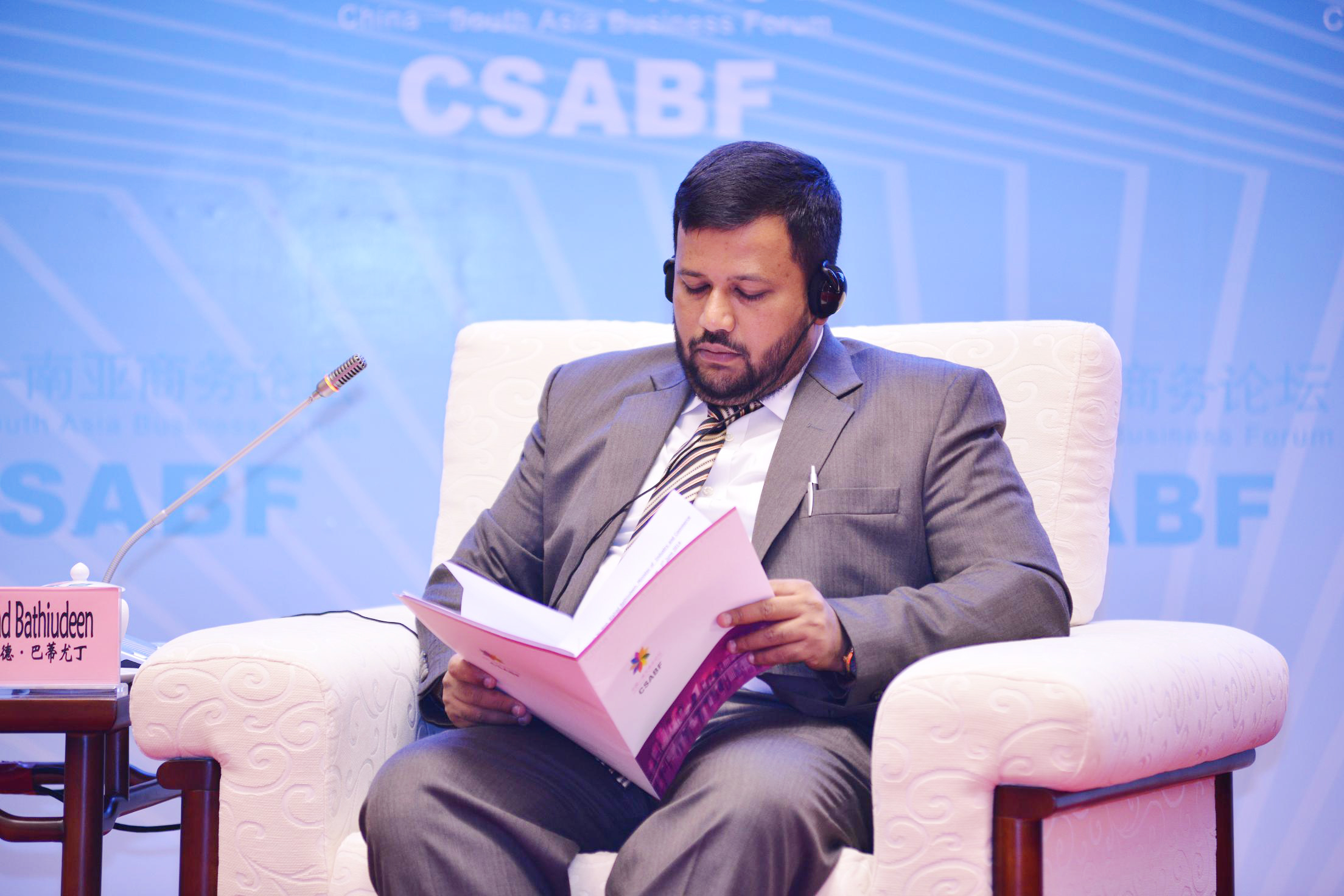KUNMING, June 8 (Xinhua) — For Sri Lanka links with China are becoming more important as China has taken significant role in South Asian region.
China now is the third largest source of tourists for Sri Lanka behind India and Britain. In addition to tourists, the island welcomes investors bringing funds and technology.
Trade volume between China and South Asian countries increased from 35 billion U.S. dollars in 2006 to about 100 billion U.S. dollars in 2013, but the fast growth features a rising trade imbalance with China exporting more commodities.
At the ongoing second China-South Asia Expo, which kicked off Friday in Kunming, capital city of southwest China’ s Yunnan Province, officials and businessmen from China and South Asian countries have pledged to expand investment, upgrade exports and domestic industries to seek import and export balance.
Trade between Sri Lanka and China reached more than 3.6 billion U.S. dollars in 2013, with Sri Lanka exports to China accounting for only about 100 million U.S. dollars, said Sri Lanka’ s Industry and Commerce Minister Rishad Bathiudeen at the expo on Saturday.
After deepening understanding of Chinese market, Sri Lanka hopes to enhance cooperation with the world’ s second largest economy in industries including rubber, mineral and fish, and bring in more investment to narrow the deficit, he said.
Fazal ur Rahman, executive director of the Pakistan Council on China, pointed out China has played an important role in helping South Asian countries weathering financial crisis, and brought historical opportunities for the region’ s economic progress.
Since ancient times, China and South Asian nations are neighbors boasting large population and sharing huge markets.
As China is shifting from export-oriented economy to domestic-demand orientation and encouraging more enterprises to go global, he said its southern neighbors should also adjust the structures of trading products and industries to attract their Chinese buyers.
Over the past decades, Yunnan have been exporting to South Asian countries mainly manufactured goods like mechanical and electrical commodities, while its imports have been resource products, thus giving itself a trade advantage and creating large trade surpluses.
Bangladeshi Prime Minister Sheikh Hasina said at a forum in the expo that she welcomed China to import more clothes, handicrafts and leather products from Bangladesh. Meanwhile, she hoped Chinese investors to focus more on high value-added goods in fields of medicine, shipbuilding and communication.
Besides changing export products, South Asian countries are urged to upgrade their own industries to attract more investments.
Ismail Asif, President of Chamber of Commerce and Industry, South Asian Association for Regional Cooperation (SAARC), suggested countries in the region deepen cooperation in new fields, such as energy, education, tourism and transportation in addition to traditional industries, and reduce trade barriers.
Li Jiming, head of the Yunnan International Exhibition Bureau, agreed his view.
In order to reverse trade imbalance, South Asian countries should unlock potential in high value-added and emerging industries like tourism, software, medical treatment and education.
Actually, China has taken a string of measures to boost its investment in South Asia. On the one hand, it invites foreign merchants to attend various expos and promotes their products. On the other, it organizes Chinese companies to buy in South Asia and offers consultations and assistance.
Import and export balance and industrial upgrading will promote trade and economic cooperation between China and its southern neighbors to a new high, Fazal ur Rahman said.
